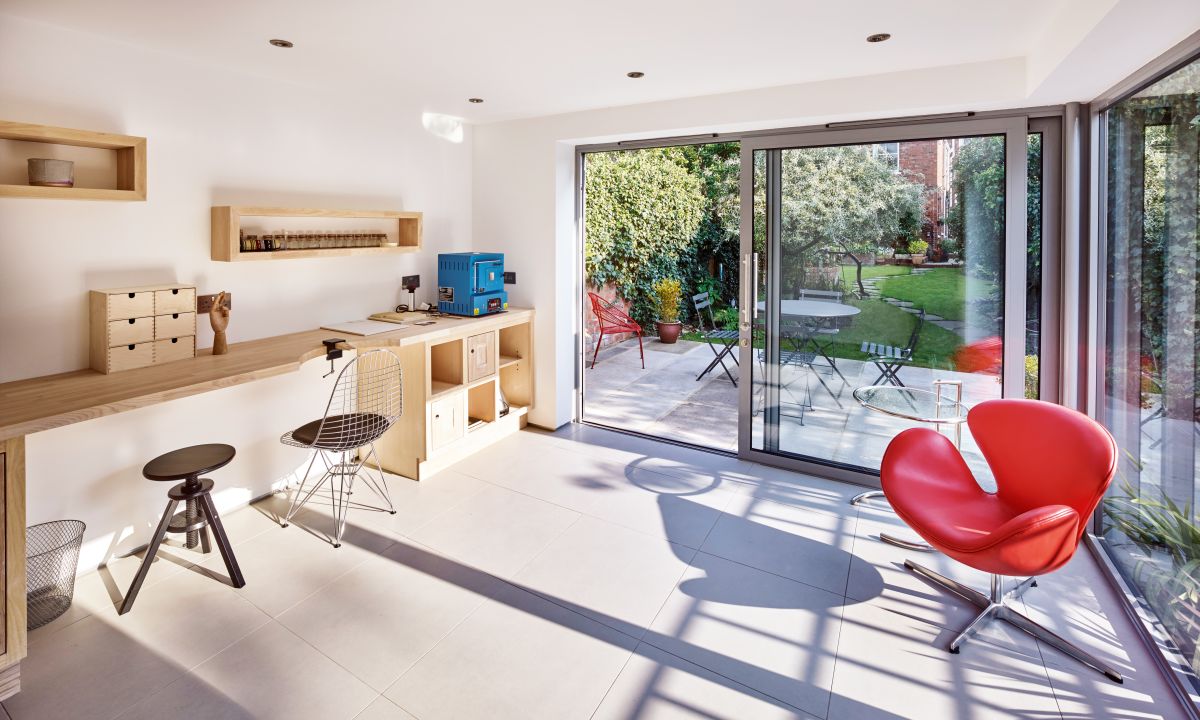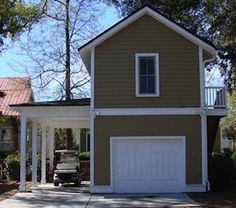
Garage shelving units are available in many shapes and sizes. If you are looking to get the most out of your garage, it is important to choose a unit that fits your needs and can support a wide range of heavy items. How long it lasts will depend on the material you use.
Metal shelves last for a long time. These shelves are ideal for industrial areas, sheds, and workshops. Most metal shelving has fasteners to keep the shelves in place. These fasteners are rust-proof and therefore easy to clean. For metal shelving, you can use all-purpose cleaners.
Wooden shelves look great in your workspace. You can make these shelves from many different types of wood including pine, maple, or oak. These woods also have a high level of durability.

Plastic shelving is another popular material. However, it can warp when subjected to extreme loads. A plastic unit is very affordable and can be used for light-duty storage. Metal or steel shelving is better for heavier loads.
Depending on the amount of storage you need in your garage, you might be interested in either a mounted or a freestanding unit. Mounted shelving can be attached to the ceiling or walls, while freestanding models can be mounted on wheels. Both types of shelving allow you to arrange items vertically or horizontally. You can also buy a retractable lift for your shelving.
Wire shelving is lightweight and sturdy. This type of garage shelving can handle up to 4,000 pounds of weight. It comes in a wide range of sizes, colors, and materials. You can even find corner shelves that are specifically designed for tools to make it easier to reach your workspace.
These units are easy to put together. These units can take up lots of space. If you plan on storing large and heavy items on the unit, you may want to consider investing in a hanging shelf. An overhead rack is another option to increase storage space.

Gracious Living offers resin-coated garage shelving for those who are tight on budget. It's easy to assemble, affordable, and can withstand significant wear and tear. It's also light, making it easy to transport. Also, the shelves can be connected together to form a long unit.
Another option is to build your own garage shelving unit. You can use your old cabinets to build your garage shelving unit. Or, you could buy shelves and brackets directly from the manufacturer. Many companies provide installation instructions. Depending on the size of the garage, shelves can be installed anywhere between 2 feet and 8 feet.
Installing garage shelving units requires tools. Your shelving should be cleaned regularly. You may have to clean your shelving more often than you would a cardboard box depending on its contents.
FAQ
Is $30000 too much for a kitchen redesign?
A kitchen renovation can cost anywhere between $15000 - $35000 depending on how much you want to spend. For a complete renovation of your kitchen, you can expect to pay over $20,000. However, if you want to update appliances, replace countertops, or add lighting and paint, you could do it for under $3000.
An average cost for a complete renovation is between $12,000-$25,000. But there are ways to save money without compromising quality. For example, you can install a new sink instead of replacing an old one, which costs approximately $1000. You can also purchase used appliances at half of the cost of new.
Kitchen renovations take longer than other types of projects, so plan accordingly. You don't want your kitchen to be finished halfway through.
It is best to start early. Start by looking at different options and getting quotes from contractors. Then narrow down your choices based on price, quality, and availability.
Once you have contacted a few contractors, ask them for estimates and then compare prices. The lowest-priced bid isn't always the best choice. It's important that you find someone with similar work experiences who can provide a detailed estimate.
Make sure you include all extras in your final cost calculation. These may include labor or material charges, permits and so forth. You should be realistic about what you can spend and stick to your spending budget.
Don't be afraid to tell the contractor what you think about any of the quotes. Tell the contractor if you are not satisfied with the first quote. Give him or her another chance. Do not let your pride stop you from saving money.
How can you tell if your house needs renovations or a remodel?
First, look at how recent your home has been renovated. A renovation may be a good idea if there have been no updates for several years. On the other hand, if your home looks brand-new, then you may want to think about a remodel.
Second, make sure to inspect the state of your home. It's possible to renovate your home if there are holes in the walls, peeling wallpaper or damaged tiles. If your home is in good condition, it might be worth considering a remodel.
You should also consider the overall condition of your house. Is it structurally sound? Are the rooms well-lit? Are the floors in good condition? These are vital questions to ask when you decide which type of renovation should be done.
What is included in a full-scale kitchen remodel?
A full kitchen remodels more than just a new sink and faucet. There are cabinets, countertops as well, lighting fixtures and flooring.
A complete kitchen remodel allows homeowners the opportunity to upgrade their kitchens without any major construction. This means that no demolition is required, making the project easier for both the homeowner and the contractor.
Kitchen renovations include various services, including electrical, plumbing, HVAC, carpentry, painting, and drywall installation. Depending on the extent of the kitchen remodel, multiple contractors may be required.
The best way to ensure a kitchen remodel goes smoothly is to hire professionals with experience working together. There are often many moving parts in a kitchen remodel, so small problems can cause delays. You should plan ahead and prepare a backup plan for any unexpected situations if you decide to DIY.
What order should you renovate an existing house?
The roof. The second is the plumbing. Third, the electrical wiring. Fourth, the walls. Fifth, the floor. Sixth, are the windows. Seventh, the doors. Eighth, the kitchen. Ninth are the bathrooms. Tenth: The garage.
Once you've completed these steps, you can finally get to the attic.
If you don't know how to renovate your own house, you might hire somebody who does. Renovations take time, patience, and effort. It will also cost money. It will take time and money.
Although renovations are not cheap, they can save you a lot of money in the end. You will enjoy a more peaceful life if you have a beautiful house.
Are there any savings on a remodel of a bathroom or kitchen.
Remodeling a bathroom or kitchen can be expensive. It may make more sense to spend money on home improvements, considering how much you pay in energy bills each month.
Small upgrades can help you save thousands of dollars per year. A few simple changes, such as adding insulation to walls and ceilings, can reduce heating and cooling costs by up to 30 percent. Even a small improvement can make a difference in comfort and increase resale.
When planning for renovations, it is important to select durable and easy-to-maintain products. Materials such as porcelain tile, stainless steel appliances, and solid wood flooring last longer and require fewer repairs than vinyl or laminate countertops.
You might also find that replacing old fixtures by newer models can reduce utility expenses. Low-flow faucets and showerheads can reduce water consumption by as much as 50%. By replacing inefficient lighting with compact fluorescent lamps, you can reduce electricity consumption up to 75%.
What is the difference between building a new home and gutting a current one?
The process of gutting a house involves removing all contents inside the building. This includes walls, floors and ceilings, plumbing, electrical wiring and appliances. It is often done when you are moving to a new location and wish to make some improvements before you move in. It is often very costly to gut a home because of all the work involved. Depending on your job, the average cost to gut a home can run from $10,000 to $20,000.
Building a home means that a builder constructs a house piece by piece, then adds windows, doors, cabinets and countertops to it. This is typically done after purchasing lots and lots of lands. Building a home usually costs less than gutting and can cost between $15,000 and $30,000.
It really depends on your plans for the space. You'll likely need to spend more money if you want to gut a property. If you're building your home, however, you don't have to tear everything down and start over. Instead of waiting for someone else, you can build it how you want.
Statistics
- 55%Universal average cost: $38,813Additional home value: $22,475Return on investment: 58%Mid-range average cost: $24,424Additional home value: $14,671Return on investment: (rocketmortgage.com)
- $320,976Additional home value: $152,996Return on investment: 48%Mid-range average cost: $156,741Additional home value: $85,672Return on investment: (rocketmortgage.com)
- About 33 percent of people report renovating their primary bedroom to increase livability and overall function. (rocketmortgage.com)
- bathroom5%Siding3 – 5%Windows3 – 4%Patio or backyard2 – (rocketmortgage.com)
- According to a survey of renovations in the top 50 U.S. metro cities by Houzz, people spend $15,000 on average per renovation project. (rocketmortgage.com)
External Links
How To
Are you required to obtain a building permit for home renovations?
Make sure your renovations are done correctly. All construction projects that involve exterior wall changes are subject to building permits. This includes adding an addition, remodeling your kitchen, replacing windows, etc.
However, if you have decided to renovate without a building permit, you could face serious consequences. For example, you may face fines or even legal action against you if someone is injured during the renovation process.
This is because most states require anyone working on a residential structure to obtain a building permit before starting the job. Many cities and counties also require homeowners who are interested in building a home to apply for one before they can begin construction.
Building permits are typically issued by local government agencies. They can be obtained online, or by phone.
It would be best if you had a building permit because it ensures that the project complies with local safety standards, fire codes, and structural integrity regulations.
A building inspector, for instance will verify that the structure complies with current building code requirements.
Inspectors will also check that the planks used in the construction of the deck can withstand the weight of any load placed on them. Inspectors will look out for water damage, cracks and other issues that could affect the structure's stability.
Once the building permit is approved, contractors can proceed with the renovations. Contractors who fail to get the permits could face fines or even arrest.